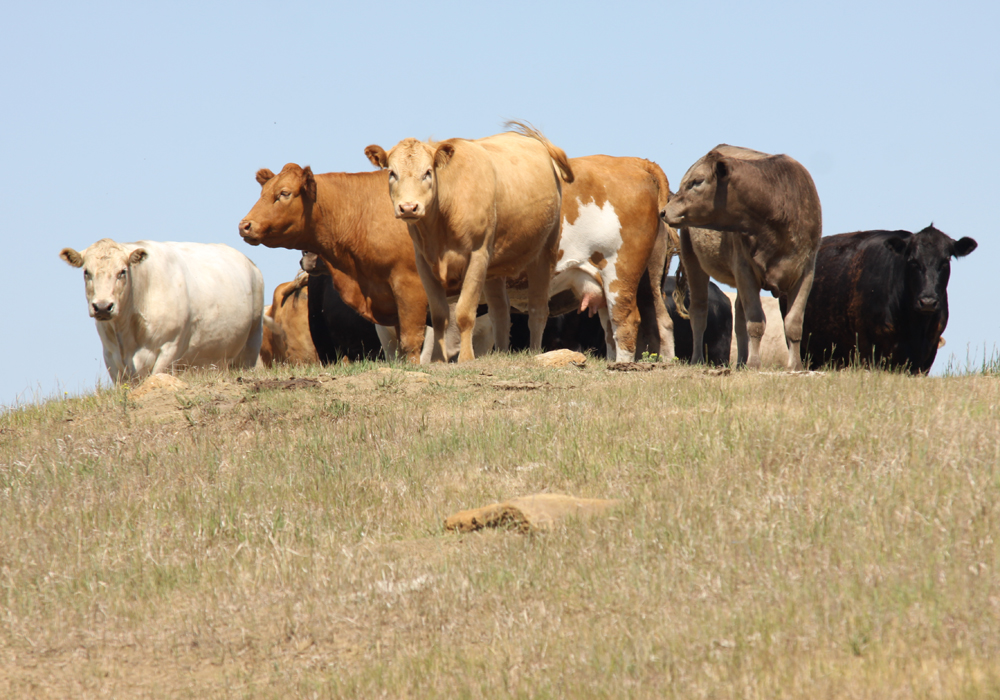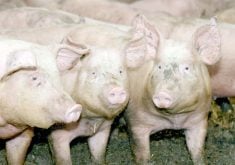Most cattle producers are going to need moisture during the growing season if their fields are to be replenished
Many producers across the Prairies are dealing with dry pasture conditions, hoping moisture will soon come to replenish their fields.
Areas from Calgary to Winnipeg are either abnormally dry or facing drought conditions, according to Agriculture Canada’s Canadian Drought Monitor, causing slight anxiety over pasture quality for the upcoming growing season.
“There are certainly some concerns out there, but it’s not dire by any stretch,” said Trevor Hadwen, an agroclimate specialist with the drought monitor.
“Pasture productivity has slowed. The moisture isn’t there to kickstart pastures growing and greening-up yet, though that could turn around.”
Read Also

The Western Producer Livestock Report – October 2, 2025
Western Producer Livestock Report for October 2, 2025. See U.S. & Canadian hog prices, Canadian bison & lamb market data and sale insight.
Many fields were dry going into the fall, Hadwen explained, adding there wasn’t enough moisture over winter or this spring yet to replenish deficits.
“In Saskatchewan, this was one of the driest Marches on record and April hasn’t been much better at this point,” he said.
The problem areas in Saskatchewan, according to the drought monitor, are mostly within the Regina-to-Saskatoon corridor, as well as in the Yorkton region.
Areas that are considered not abnormally dry include fields northeast of Saskatoon and west of Estevan, Sask., extending to regions south of Lethbridge.
“Producers are concerned, though it is very early,” said John Hauer, a range management extension specialist with the Saskatchewan government.
“We had a warm start to spring, but things could change,” he added, pointing to the forecast that called for rain and snow in many regions of Alberta and Saskatchewan for the week of April 28 to May 4.
In Alberta, the Lethbridge-to-Edmonton corridor is abnormally dry, with large pockets around Red Deer and Lloydminster experiencing moderate drought.
“We’re a little antsy,” said Doug Wray, a director with the Alberta Forage Industry Network and a rancher near Irricana, Alta., northeast of Calgary.
“We’re going to need some moisture to grow some hay and grass. The sooner, the better.”
In Alberta, areas not considered abnormally dry are between Edmonton and Grande Prairie, though regions in the Peace River and La Crete areas are experiencing moderate to severe drought.
In Manitoba, fields west of Winnipeg are parched, with heightened concerns in the Neepawa, Russell and Dauphin areas, as well as in the Carman area.
In British Columbia, fields around Fort St. John and south to Williams Lake are in the clear for abnormal dryness though the Prince George, Kamloops and Kelowna regions are parched.
Hadwen said there is little water in dugouts because of a slow melt and low runoff amounts, putting cattle producers in a bigger bind.
“Southern Saskatchewan and parts of Alberta are again starting the year with poor water supplies, which would need to be replenished by rainfall over the growing period,” he said.
“Water supply could be a problem later in the year, depending on the heat and the rainfall.”
Wray in Irricana said he didn’t get much water from runoff this year, and hoped moisture conditions improve.
He said he cut his cattle numbers by 20 percent in anticipation of another dry year and tried not to overgraze his pastures so that they would have a better chance of regrowing.
“When and if they get moisture, the pasture will respond pretty quickly,” he said.
“It’s important to protect the health and vigour so they respond to moisture when it comes. That means de-stocking, finding another pasture or using up feed reserves, none of which are particularly easy to do when you’re in a dry spell.”
Hauer said producers could also plant cereals this year for grazing, which could help them extend or keep their cattle longer.
Cereals could be grown to maturity, he said, and later cut for green feed because hay yields might not be as high.


















